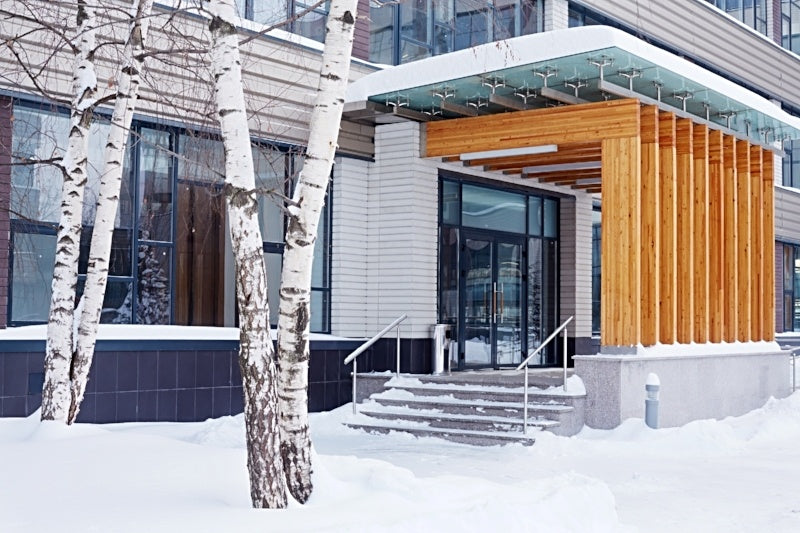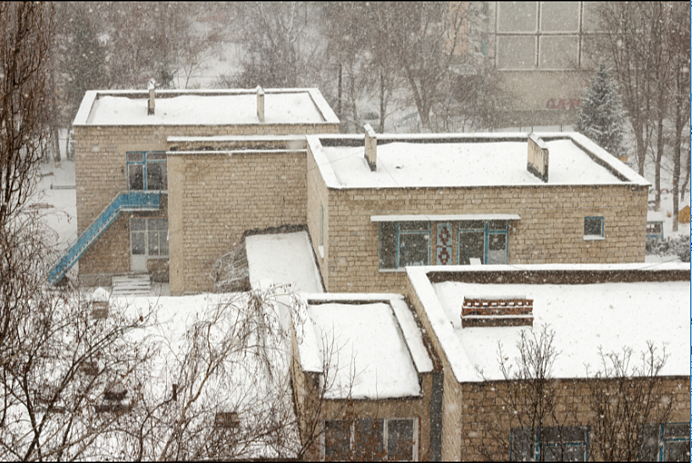
Every facility manager knows the benefit of an entrance mat, but most don’t understand that all mats are not created equal. Using the wrong kind of mat at a location can still lead to slip and fall accidents, negating the purpose of having an entrance mat to begin with. With managers of industrial/commercial facilities under greater amounts of pressure to reduce slip and fall accidents, not to mention minimize floor maintenance costs, knowing which mat to use for which location is critical.
The Basics
Entrance mats can greatly reduce the risk of slip and fall accidents in your facility, especially on uncarpeted flooring. To do this, however, they must be firm-gripping on the bottom and not prone to wrinkling or folding over. Mats should be placed both indoors and outdoors at all building entrances, and the largest, toughest mats should be at your widest, highest-traffic entrances and those that double as fire exits.
Mats also serve to remove excess dirt and debris, and a typical commercial entrance with 15 linear feet (4.5 meters) of mat coverage can eliminate 80% or more of dirt that would otherwise enter your building. Also be sure that, whether with one or two mats, the width is enough to cover one's first two steps both inside and out (thus four steps total) in main entry zones. Following these guidelines will significantly lessen the frequency at which sweeping/mopping are needed and extend the life of your floor. Additionally, it cuts down on airborne dust particles getting into your indoor air.
Finally, entrance mats absorb moisture from rain/snow on incoming footwear. Without them, puddling is sure to occur, which puts you at high risk of slip and fall accidents. With carpeted mats, be sure never to use high-pile since it is harder to clean, easier to trip on, and harder for wheelchairs to roll over with ease.
Where to Use the Three Basic Kinds of Entrance Mats
There are three basic varieties of entrance mats, classified according to functionality, which are: scraper, wiper, and hybrid mats.
- Scraper mats are generally designed for just outside the door, but can also be used between two sets of doors. They may be of hard plastic or of looped and/or highly coarse materials and must withstand severe weather long-term. Their purpose is mainly to scrape off larger particles of dirt and debris.
- Wiper mats are designed mainly to absorb moisture and remove finer dirt/dust particles from incoming feet. They are mostly used inside the building, both at entryways and in hallways. Be sure that your wiper mats will not discolor the flooring below them, and it is best if they are dark-colored or a "kaleidoscope" patterning so dirt won't become too obvious.
- Hybrid mats are built for both scraping and absorbing moisture. They are sometimes used inside instead of wiper mats if a lot of dirt will be tracked in. They can also be used as "stage two" inside when a "stage three" wiper mat immediately follows.
Placement of Mats in Different Areas of Your Facility
Each "mat-worthy" location of a commercial office building or industrial facility will be best served by particular types of mats. Mats should be measured so as not to touch walls or furniture but to fully span the area in front of the doorway.
- Outside the main entrance, a molded rubber scraper mat is a good choice, and there is no reason it should not bear the company logo and double as a "floor sign."
- Anti-slip mats that attach to the floor using some form of strong (but removable) adhesive are perfect for inclined zones in industrial facilities, where many slip and falls tend to occur.
- In industrial work areas where workers must stand for long spans of time, anti-fatigue mats should be placed. They will both reduce worker discomfort and boost productivity.
- In "transitional areas" between, say, an office and a warehouse area, an anti-bacterial mat is often used. This prevents bacteria from easily spreading from one part of your facility to another.
- Near electronic equipment of all kinds in offices, you should consider installing anti-static and/or electrically conductive mats.
- An "olefin" mat (extremely absorbent) can be placed below drinking fountains to absorb any spillage.
- Food-service areas should be matted with heavy-duty hybrid mats that effectively combat both moisture and dirt.
- Finally, we should mention that mats must be periodically cleaned. Those mats that work best will become the dirtiest, and you need to have a plan to thoroughly clean them. This may include shaking, sweeping off, or vacuuming. Outdoor mats can be hosed down to wash them, while indoor mats may need to be machine-washed and hung out to dry.
Entrance mats and other mats throughout your facility are your "first line of defense" against dirt and moisture. Learning how best to select/position them will prove cost-effective.


